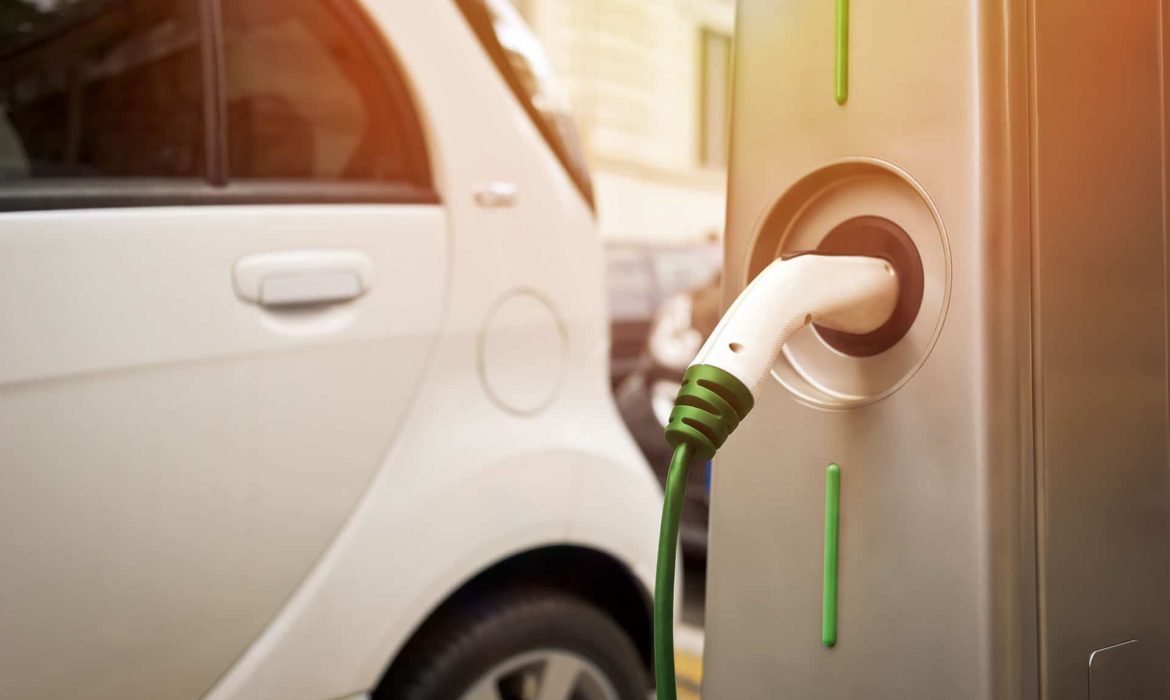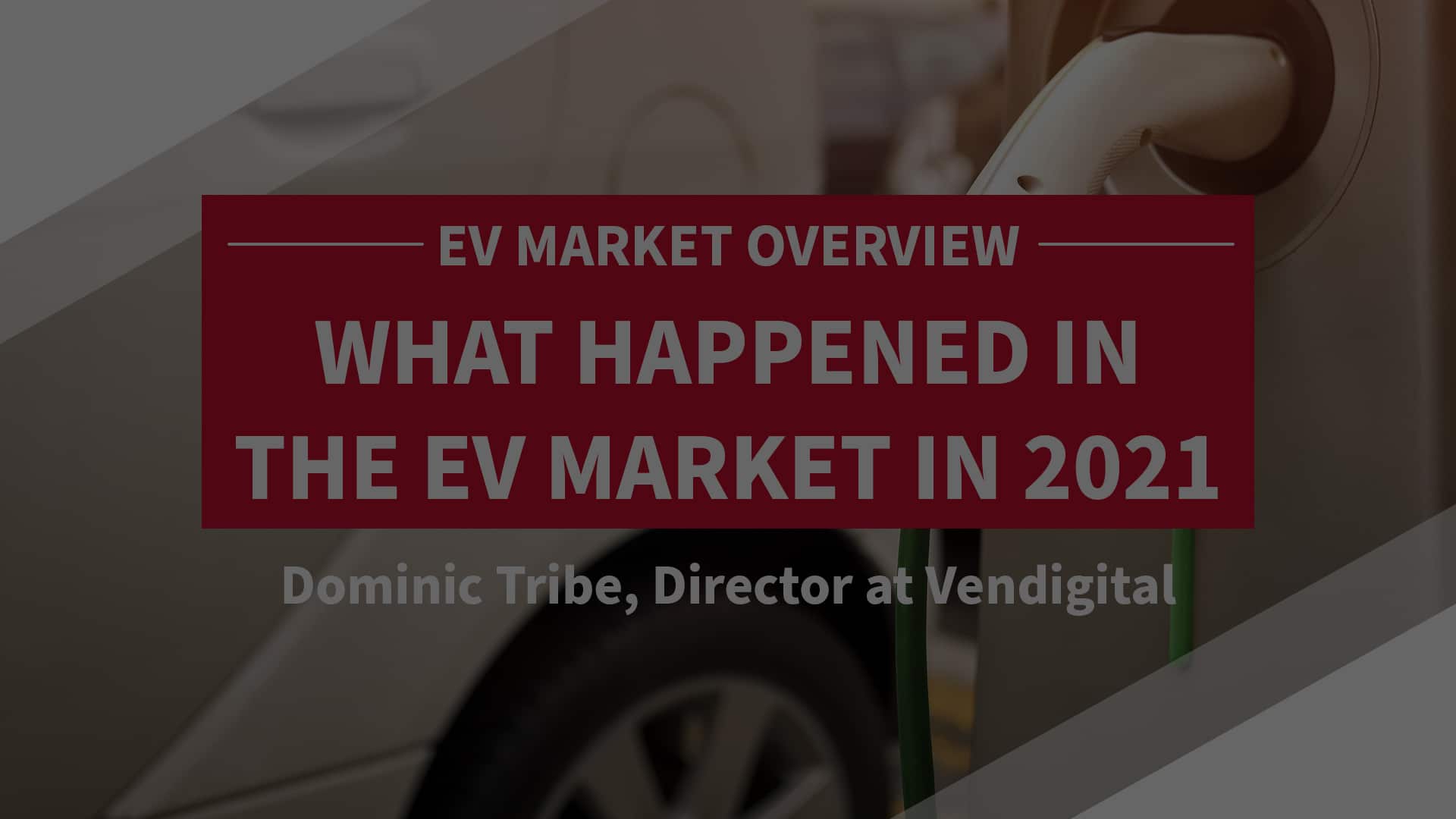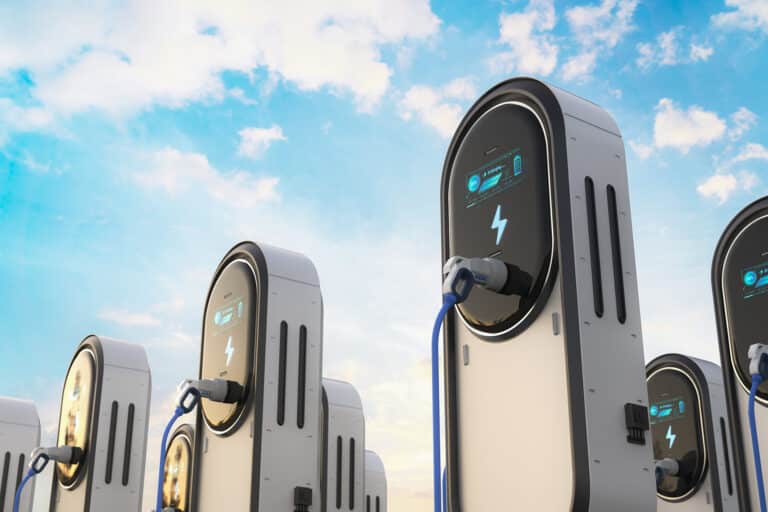
Increasing capacity and meeting decarbonisation goals – can it be done?
We discuss the cost and infrastructure considerations of switching to an all-electric fleet of off-highway vehicles.

In the first of a series of three videos providing an overview of the EV market, Vendigital Director and automotive specialist Dominic Tribe looks back at the EV market in 2021.

What happened in the EV market in 2021 – transcript
2021 was a big year for electric vehicles. Not only were sales bigger than they have been ever in the history of electric vehicle sales, but also there were some pivotal moments in 2021. For me there’s a stigma attached to electric vehicles around them and not being dynamic cars or drivers cars and Porsche actually sort of sort of bucked that trend in terms of 2021 sales which actually saw the Taycan out selling the Porsche 911. The Macan and the Cayenne still outsell all the other vehicle lines at the moment, there’s a big demand for SUV at the moment, but the Taycan with about 41,000 units outsold the 38,000 units for the 911. Whilst they are slightly different in terms of the target market, they still represent what is considered a drivers car and so it really stood out for 2021 in terms of electric vehicles can be dynamic and fun and engaging in terms of driver’s vehicles.
The second pivotal moment was really around 2021 and particularly Q4 and December, whereby electric vehicles outsold diesels. This is the first time it’s ever happened and we’ll get onto a bit more detail in some of the subsequent slides, but for me really it was a marked occasion and largely driven from mainland Europe, particularly the German OEMs who are pushing hard to push out electric vehicles, plug-in hybrid vehicles, for example, particularly because of the legislation and the penalties for not meeting the CO2 targets.
Diesel enjoyed its market share prowess back in 2008 where just over 55% of the market share was diesels and ever since, that’s pretty been on a decline and obviously with scandals such as Dieselgate and the politicisation of diesel we’ve seen that reduce and reduce year on year. Now this sort of emerging electric vehicles have now crossed over the declining vehicles in terms of diesel engines.
The other pivotal moment really for 2021 was around the consumer choices available. If we look back to 2018 there were barely even 30 electric vehicle options available to UK consumers, and as of pretty much the end of 2021 there were 136. Now we’ve seeing that climb even more to over 140 within the first few months of 2022. So now, and ever increasingly, there’s going to be more and more electric vehicles and choices for consumers and that will help drive sales even further.
2021 saw the largest ever electric vehicle sales that we’ve seen at about 6.6 million units worldwide, just under 9% of all the automotive vehicles that were manufactured throughout 2021. Interestingly just after the first eight months of 2021 the number of electric vehicles sold had surpassed all those from 2020 and by about the end of Q3 they’re about 1 million units sold. What we really saw in the last quarter of 2021 was a real rallying effort to push and maximise the production of EVs, particularly driven by the CO2 targets and the legislation, but also by consumer demand which was helped by government policy and legislation driving the transition to electric vehicles.
By the end of the first half of 2021 what we saw was Europe and China were actually level pegging in terms of output, so they shared about 2 million vehicles, so a million for each region. But what we saw throughout the second half of the year was a real push from China in terms of their production capacity and output and that’s why we see now that of about 6.6 million, just slightly over half came out of China, whereas just over a third of the 6.6 million came out Mainland Europe and the UK as well.
Even penetration rates, which are essentially the rate at which countries, markets and individuals are taking up electric vehicles over the alternatives, we saw a big improvement from 2020 through to 2021. Unsurprisingly if you follow some of the sales and the market trends Norway, Sweden, for example have seen big improvements and already have a huge amount of adoption and penetration for electric vehicles throughout the market. Almost without exception we saw an improvement in those penetration rates from 2020 to 2021, the only exception being in the Netherlands and the reason being is that some of the incentives and the subsidies that the government were providing, essentially were announced particularly towards the end of 2021 and so consumers, not unsurprisingly, were waiting for the new incentives and subsidies to come in at the first quarter of 2022 so we saw a slight decrease on the penetration rates in the Netherlands.
But overall, as mentioned, most other countries have seen quite marked improvements in those penetration rates and unsurprisingly we expect that trend to continue, particularly as legislation kind of drives the necessity to transition to electric vehicles, but also as the infrastructure allows the adoption of consumers to take on electric vehicles as their daily drivers.
If we look a bit closer to home, particularly within Western Europe, including the UK, particularly in December, we saw big improvements where actually one in five vehicles coming to the production line were battery electric and almost a third of vehicles were plug-in hybrids. Overall, about 175,000 battery electric vehicles within the EU mainland, about 18 European markets, and that’s out of a car park of about 861,000 passenger vehicles. That’s the total 10.6 million for the year, and within Europe, and of that was the 1.19 million.
What we also saw was that Tesla, kind of the king of EVs in terms of sales in the moment, had actually overtaken Volkswagen as an individual brand, but when you look at Volkswagen Group they obviously have the lion’s share will come on later as well. Interestingly, both Bentley and Porsche saw record sales in 2021, but this was not necessarily driven by electric vehicles but rather driven by the better margins. So, Volkswagen Group pushing more products in terms of selling not just through to the likes of Bentley and Porsche but improve on the margins whereby those semiconductors that were available were pushed to the kind of better margin vehicles and unsurprisingly SUV still remain ever more popular. When we look at battery electric vehicles, 41% of those are SUVs, about 62% of SUVs are plug-in hybrids as well. So we’re seeing a real trend following through in terms of electric vehicle adoption, but also the desire still to have SUVs, which actually works out quite conveniently because you need a bit more space to house at the batteries as well.
But overall, I expect to see more record numbers as we transition throughout 2022 in terms of electric vehicle sales but overall there has been a retraction in the market in terms of overall production output, again driven by COVID but also within the semiconductor industry, putting constraints on production output.
In 2021, particularly with the west to market, we see some of the OEMs market share. So Volkswagen Group having almost a quarter of the market share there and Stellantis and Tesla kind of closely followed suit and sort of level pegging with just over 14%. Renault-Nissan with Hyundai / Kia just over the 10% mark. Interesting Mercedes and BMW group, when we talk about battery electric vehicles in particular, are slightly behind the curve because actually they were driving a lot of plug-in hybrids out particularly to avoid some of these CO2 fines that they were going to incur, so a lot of effort pushing towards plug-in hybrids from those groups.
And then when we look at some of the smaller brands like Volvo / Polestar, for example, they’re starting to see quite significant market share in terms of where they were a year ago, remembering that Polestar is a relatively new embryonic and emerging brand. I expect that they will increase their market share as we move into the subsequent years going forward as well.
Sign up to get the latest insights from Vendigital
Hear from an industry expert
Related Insights

We discuss the cost and infrastructure considerations of switching to an all-electric fleet of off-highway vehicles.

EV makers in the UK and Europe are warning that Zero Emission Mandates are simply not doable and subdued levels of demand could force them to close factories. Should the industry embrace Chinese capability before it’s too late?

In our latest report we examine the impact of power electronics and the importance of inverters in EV manufacturing.
Subscribe to our newsletter